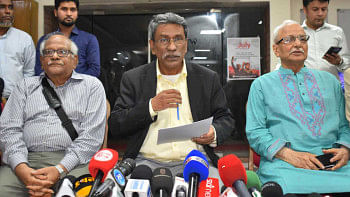Why do women get less pay than men?

How long will women working the same job continue to earn less, sometimes 50 percent less, than men? And when do we expect this gap to go away? One can only speculate, or build models, to get a clearer picture of trends in future employment, wages and salaries, and working conditions. However, all projections indicate that gender wage gap will persist for a few more decades, and in certain professions and jobs. Many academicians are currently working with data, big and small, to get to the bottom of this issue which has existed for ages and has defied all efforts to lower the gap.
The bottom line is, there is no easy and clear solution because to paraphrase Harvard economist Claudia Goldin, the actual "gender pay gap" is far more complex than that math suggests.
The gender wage gap is the difference between gross average nominal monthly wages of male and those of female employees expressed as a percentage of wages of male employees. In Bangladesh, for the same work, gender pay gap was 57 percent in 2017 and 54 percent in 2016, according to one study.
By and large, women earn about half as much as men in Bangladesh; this gender gap is only exacerbated in the informal market where, for example, a male construction worker can make one and a half times more than his female counterpart. Studies show that a Bangladeshi woman earns on average 77 cents on the dollar compared to men. And again, mind you, we are talking about the same job, working the same number of hours.
Fortunately, all studies also indicate that the gender pay gap in Bangladesh has been going down. A recent paper in World Development, an international journal, by Salma Ahmed and Mark McGillivray show that over the period 1999–2009, the gap in average wages between men and women decreased by 31 percent and this is mostly due to better education of women and enforcement of laws. Other studies reveal another parallel trend, across all sectors. Women's wages do not rise as much and often fail to keep up with inflation causing a drop in real wages. For example, if the minimum wage for garment workers, mostly women, is raised to Tk 8,000 as proposed, the real income after accounting for cost of living increases will be lower than the increase in per capita income, which almost doubled between 2013 and 2018.
So, why do women get paid less than men? This question has attracted a lot of attention in international academic literature. Some of the factors include less education, skills, and marriage. However, economists using very sophisticated tools found that 38 percent of the wage gap remains unexplained even when factors such as these are included as "control variables" in the models. In other words, "gender pay gap relates both to women's greater representation in lower-paid sectors such as teaching and health care, as well as the wage differential between women and men in comparable roles."
Three of the most significant contributors to the wage gap are "the penalty women face for becoming mothers, women's lack of negotiating skills and the bias women face from employers," according to Olivia Mitchell of the Wharton School of the University of Pennsylvania. "The fact that such a large percentage of the gap cannot be explained underscores the need for policies directly targeting discrimination in order to completely eliminate the gap," argue economists Francine Blau and Lawrence Kahn of Cornell University.
Measures to minimise the wage gap in Bangladesh include initiatives that have been working, including access to education for women, enforcement of minimum wage laws, and greater transparency. In addition, some extra steps are called for. According to the International Labour Organization (ILO), key policy areas to reduce the gender pay gap are: contracts, promotions and remuneration. Bangladesh still has a long way to go in these areas, according to a study done recently by Manusher Jonno Foundation, in collaboration with others, in the RMG sector. 72.70 percent of the workers in Dhaka and Gazipur said that they did not have a job contract. The situation, however, was comparatively better in Chittagong and Narayanganj.
Other initiatives focusing on reducing the pay gap between men and women centre on the appointment of an in-house equality officer and on training employees, creating inequality complaint procedures and treating each case individually to decide if discrimination has occurred because of any requirements inherent in the tasks to be performed.
The Equal Pay Platform launched by ILO and UN Women is promoting awareness of good practices for eradicating gender inequality in wages, including legislation and mechanisms for dispute resolution; measures to advance women's leadership; wage transparency; and access to data on wages and other benefits disaggregated by gender, ethnicity, and migrant status.
While the Sustainable Development Goals 5 (gender) and 10 (equality) address the issue of gender equality broadly, each country must find its own set of measures to tackle gender wage gap. Bangladesh also faces the challenge of inadequate data to track progress on these fronts. For instance, SDG 10.3 requires us to "ensure equal opportunity and reduce inequalities of outcome, including by eliminating discriminatory laws, policies and practices and promoting appropriate legislation, policies and action in this regard." But this indicator will be difficult to monitor if we do not have adequate data as the Government of Bangladesh's self-assessment study reported last year. Nonetheless, campaigns to promote education and awareness can remedy some of these shortcomings, too. Bangladesh in collaboration with UN Women can strengthen the latter's advocacy campaign, "Stop the Robbery", which calls for equal pay and women's economic empowerment as part of achieving full gender equality.
Dr Abdullah Shibli is an economist, and Senior Research Fellow, International Sustainable Development Institute (ISDI), a think-tank in Boston, USA. His new book Economic Crosscurrents will be published later this year.





Comments